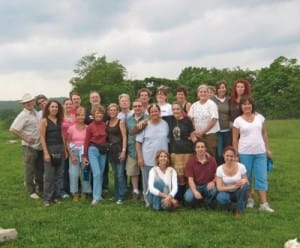Women who have a history of being exposed to violence are more liable to take risks sexually. This is according to a study published in the journal The Psychology of Violence. The violence can be any type, from abuse experienced within the family, to witnessing a violent act in the neighborhood. The study was conducted by researchers at The Miriam Hospital’s Centers for Behavioral and Preventive Medicine. Led by Jennifer Walsh, Ph.D., the study finds that some patterns of violence occurring not only in childhood but also in adulthood can lead a woman to take more sexual risks. This may include unprotected sex or having sex with a high number of partners. The findings provide new important information about the connection between violence and risky behavior related to the spread of HIV and STDs. The insight is particularly useful for prevention among low-income urban women, who are exposed to high levels of violence. Previous research has illustrated the connection between risky sexual behaviors and a variety of types of violence, from childhood abuse and intimate partner violence, but the examination of particular patterns of violence as well as their effect on sexual risks taken is a newer research area. In the current study, 481 women were recruited from an urban clinic specializing in treating STDs. The women were screened for a preceding history of violence as well as interviewed about their current risky sexual behaviors. The majority of the women were African American, most were from low-income households. The screening revealed that the women had experienced a high rate of exposure to violence when compared to rates among the population as a whole. The types of violence reported tended to be interrelated, and women who experienced one instance of violence were more likely to have experienced multiple forms of violence. The researchers used latent class analysis to detect patterns in the information gathered from the women. They were able to group the women into four classes with their experiences relating to violence. Thirty-nine percent were women with low exposure to violence, exposed to community violence mainly were 20 percent, 23 percent were exposed to maltreatment in childhood, and 18 percent were exposed to multiple types of violence. The researchers discovered that women who reported multiple acts of violence and those exposed primarily to community violence experienced the highest rates of risky sexual behavior. They were more likely to report a higher number of sexual partners and to have used alcohol and drugs before having sex. Dr. Walsh explains that with the connection between multiple experiences with violence and risky sexual behavior, it is important that extensive screening be conducted when a patient seeks help with one type of violence or risky sexual behavior. In order to impact behaviors, it is important to have the full picture.
Call for Immediate Help:1.844.876.7680

